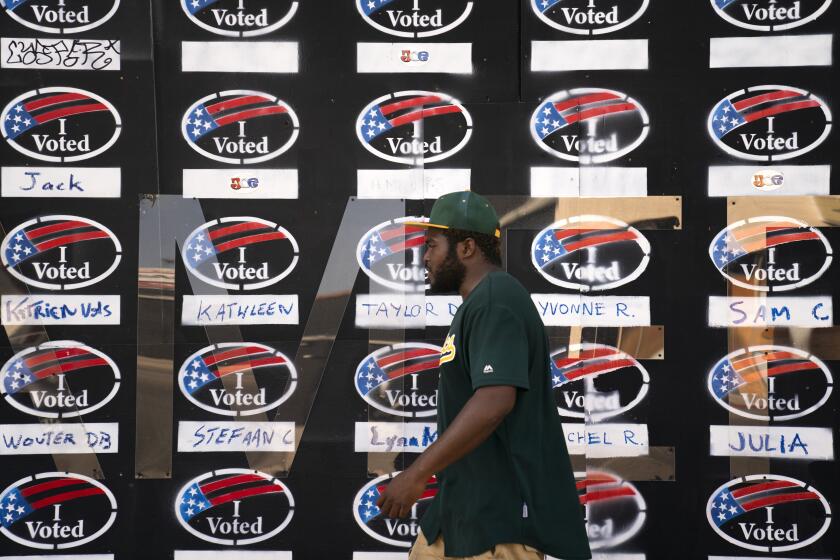Big changes to California’s school-funding rules are approved
State education officials pushed forward sweeping changes to public school funding Thursday, approving rules to give more money to needy students and more power to local educators to decide how to use the dollars.
At a daylong state Board of Education meeting, more than 300 speakers underscored tensions over the need to balance newfound flexible spending authority with assurances that the money will be used to improve services for students who are from low-income homes, learning English or in foster care.
More than 30 civil rights and community organizations urged the board to add requirements that districts with large numbers of disadvantaged students must “principally” use the money on specific services for them. The draft regulations had allowed districts where needy students make up at least 55% of pupils to use the extra funding for any purpose so long as they benefited the disadvantaged, such as buying tablet computers districtwide.
Assemblywoman Shirley Weber (D-San Diego) said plans to restore districtwide summer school, for instance, rather than targeting the aid to specific students at their particular schools, would not reflect the spirit of the new funding law.
“We run the unfortunate risk of funds being diluted and going to students of less need,” Weber said.
But the 11-member board unanimously passed the rules as written, giving schools a road map to begin crafting spending plans for the 2014-15 school year. Board President Michael Kirst said the community concerns would be addressed as the process begins to adopt permanent regulations for subsequent years.
The new system represents the most dramatic change in four decades in how California schools are funded. It gives all schools an average base grant of $7,643 per pupil, with an extra 20% boost for each disadvantaged student and an additional grant for those who attend schools where at least 55% of students are low-income, learning English or in foster care.
Gov. Jerry Brown first proposed the change in 2012; the Legislature initially rejected it but approved it last June.
During the eight-hour Sacramento meeting, a long parade of district leaders, including L.A. Unified Supt. John Deasy, urged board members to trust them with expanded local control and described efforts to reach out to parents and community members for input on how to use the money.
Long Beach Unified, for example, has formed a 69-member committee representing educators, parents and community members to work on a plan; the district has posted all meetings online and has solicited 13,000 spending ideas.
L.A. Unified has collected more than 10,000 responses to surveys on the new system, conducted town hall meetings and is putting together advisory committees on the district’s spending plan, Deasy told board members. The district has also worked to collect input with the California Endowment, the state’s largest health foundation, which organized 12 forums drawing more than 1,600 people to weigh in on their desires for the new system.
The rules “strike the right balance between empowering districts to work with their communities to decide what’s best for our students, and ensuring that our investments prioritize the neediest children,” Deasy said.
The governor also weighed in, telling board members that “minute prescriptive commands from headquarters” don’t work as well as local decisions.
“We don’t want to micromanage.… We want to give wide latitude to teach and to explore and light that fire in every student,” Brown said.
Among other things, the new rules lay out how districts must calculate their spending increases on needy students and report efforts to boost their academic performance, parent outreach and other state priorities.
Mary Lou Fulton of the California Endowment hailed the effort but said improvements were still needed, along with close monitoring, to “make sure that school districts stay true to the letter and spirit of the law.”
State Supt. of Public Instruction Tom Torlakson cautioned that it would take some time for the new system to work out its kinks.
“Because it’s a historic shift,” he said, “it can be a bit rough and tough at times.”
More to Read
Sign up for Essential California
The most important California stories and recommendations in your inbox every morning.
You may occasionally receive promotional content from the Los Angeles Times.











